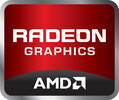AMD Radeon HD 7950M

The AMD Radeon HD 7950M is a DirectX 11 graphics card for large laptops and positioned in the high-end class. It is manufactured in 28nm and based on the GCN (Graphics Core Next) architecture.
The performance should be only slightly below the Radeon HD 7970M as rumors speak from a 3DMark11 performance of P4100 to P4300 points. The GTX 680M scored in first tests P4673 for comparison.
The design of the Radeon 7900M series has its roots to the Pitcairn chip as found, for example, on the desktop Radeon HD 7870. Further details regarding the 7950M in particular are not released yet.
Features of the 7950M include the new UVD3 video decoder for decoding MPEG-4 AVC/H.264, VC-1, MPEG-2, Flash and now also Multi-View Codec (MVC) and MPEG-4 part 2 (DivX, xVid) HD videos directly from the AMD GPU.
The 7900M series also supports automatic graphics switching between the integrated GPU and discrete GPU. Called Enduro, the technology supersedes AMD's Dynamic Switchable Graphics and is similar to Nvidia's Optimus. Furthermore, the 7950M can directly support up to 6 connected monitors using Eyefinity Technology if Enduro is disabled.
Other features of the 7900M series include ZeroCore for reducing power consumption when the display is turned off. Power Gating, however, is not supported according to AMD. PowerTune allows automatic overclocking and underclocking of the graphics card as long as the GPU is within its TDP range. For example, the chip may be underclocked when running FurMark and OCCT, but will overclock in certain games like Lost Planet, Crysis or Resident Evil 5.
The integrated HD audio processor is able to transmit HD Audio (TrueHD or DTS Master Audio) over HDMI and DisplayPort (e.g., for Blu-Ray videos). Additionally, it now allows audio to output simultaneously and in parallel to multiple devices with the new Discrete Digital Multipoint Audio (DDMA) feature.
Power consumption of the 7950M should be somewhat below the 7970M and therefore suited for big and heavy DTR-laptops.
Radeon HD 7900M Series
| ||||||||||
| Codename | Wimbledon Pro | |||||||||
| Architecture | GCN | |||||||||
| Pipelines | 1280 - unified | |||||||||
| Core Speed | 700 MHz | |||||||||
| Memory Speed | 4000 MHz | |||||||||
| Memory Bus Width | 256 Bit | |||||||||
| Memory Type | GDDR5 | |||||||||
| Max. Amount of Memory | 2048 MB | |||||||||
| Shared Memory | no | |||||||||
| API | DirectX 11.1, Shader 5.0, OpenGL 4.1 | |||||||||
| Power Consumption | 50 Watt | |||||||||
| Transistor Count | 2.8 Billion | |||||||||
| technology | 28 nm | |||||||||
| Features | OpenGL 4.2, OpenCL 1.2 | |||||||||
| Notebook Size | large | |||||||||
| Date of Announcement | 01.05.2012 | |||||||||
| Information | 212 mm2 Die | |||||||||
Benchmarks
* Smaller numbers mean a higher performance
For more games that might be playable and a list of all games and graphics cards visit our Gaming List
No reviews found.











